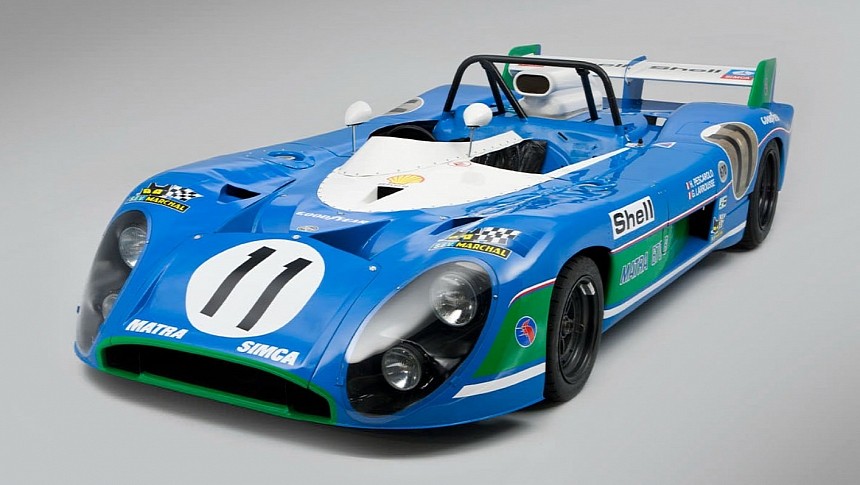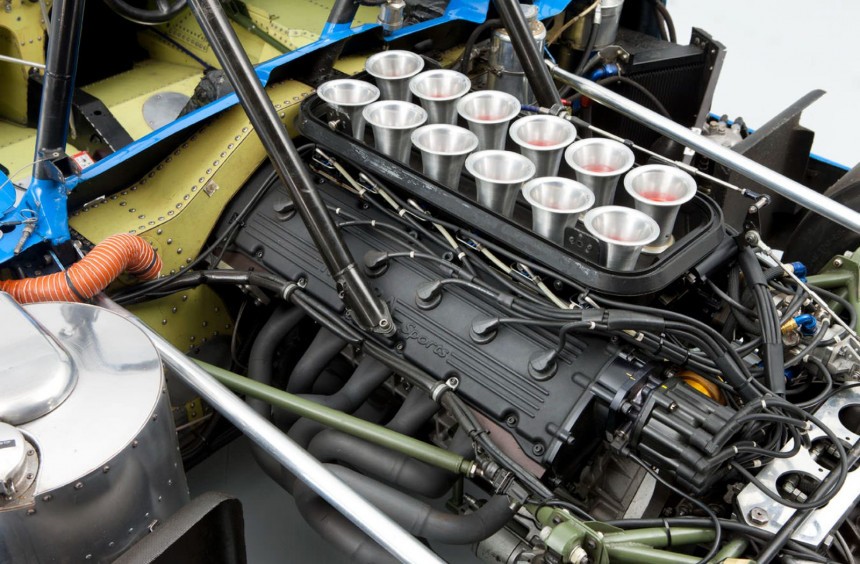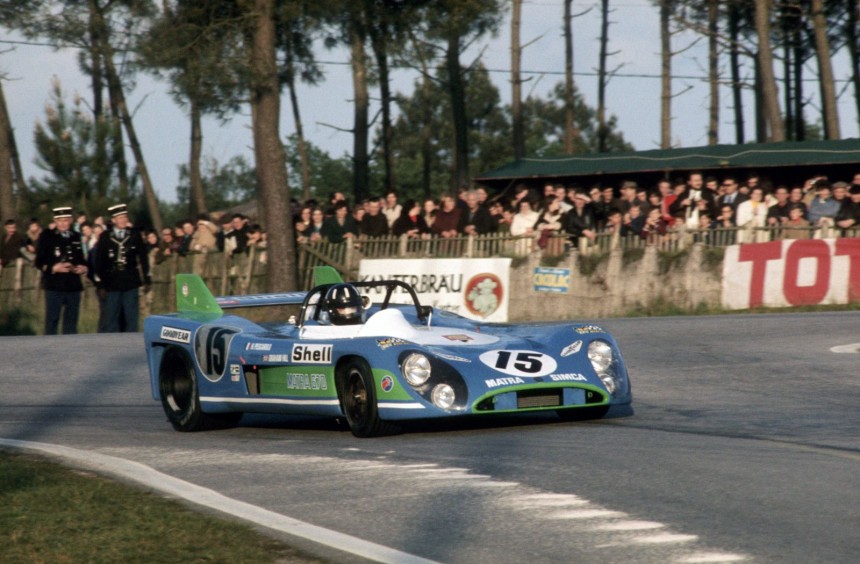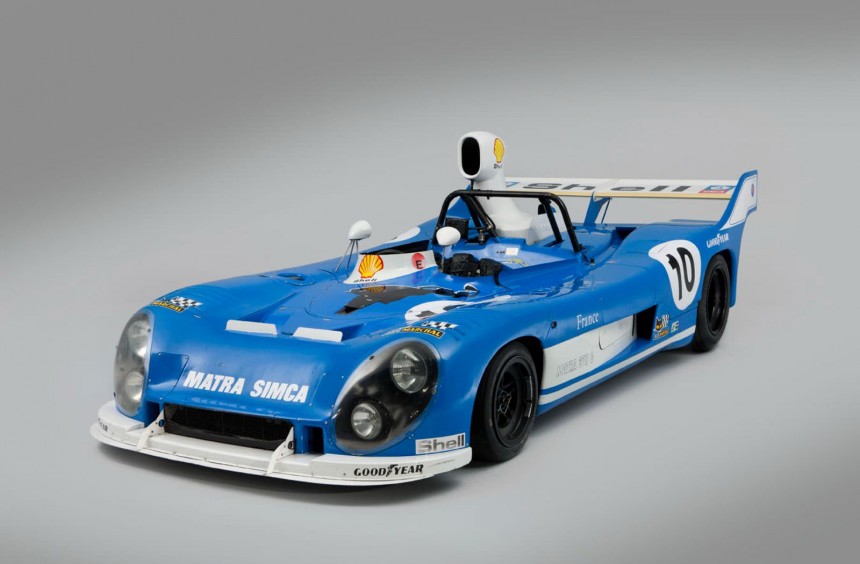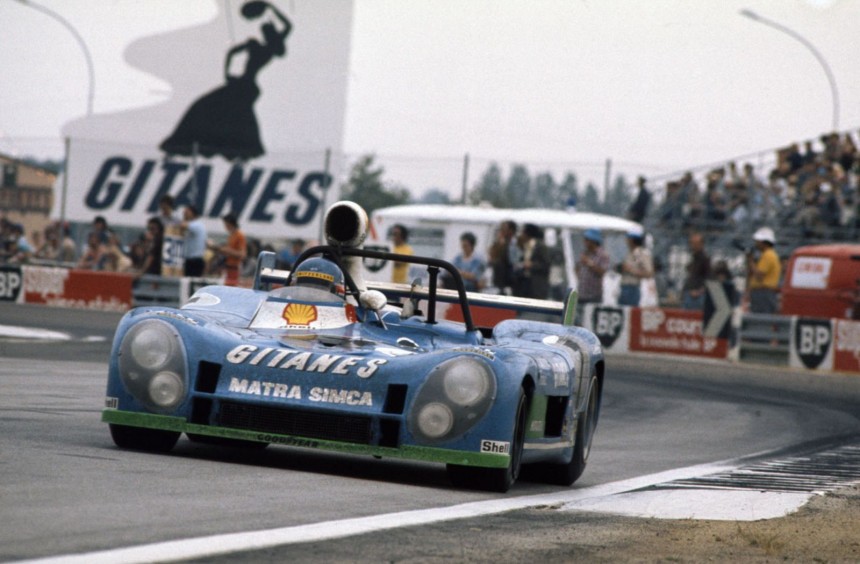After years of lurking in the shadows of Ferrari, Porsche, or Ford, the small French manufacturer took the endurance racing world by storm with its terrific MS670. From 1972 to 1974, this fantastic race car helped them win two WCM (World Championship for Makes) titles, and more importantly, it was unbeatable on home turf at Le Mans.
Established in 1945, Matra (short for Mécanique Aviation Traction) was initially an aircraft manufacturer with no connection to the automotive industry. That changed in the early 1960s when newly-appointed CEO Jean-Luc Lagardère decided to expand the company's portfolio by purchasing a small carmaker called Automobiles René Bonnet.
This led to the creation of the Matra Automobiles division, which, in just a few years, was marketing a series of exciting vehicles, including the world's first mass-produced mid-engine sports car - the Renault-powered Djet.
By the mid-1960s, Matra also started getting involved in various motorsport competitions, with Jean-Luc Lagardère promising to win a Formula 1 title and the iconic 24 Hours of Le Mans endurance race in the next decade.
Though few took the CEO's promise seriously, and the division was eventually sold to Chrysler Europe (forming Matra-Simica), that was precisely what unfolded. Formula 1 glory came first in 1969. That season, Jackie Stewart lifted the Drivers' trophy, while Matra was crowned Constructors' champions.
However, on the Le Mans front, the MS650 and its MS660 successor struggled against the likes of Ford or Porsche.
Like the MS10, MS80, and MS84 machines that helped Matra dominate the 1969 Formula 1 season, the company's first series of endurance racing prototypes were powered by Ford or BRM engines. However, in 1968, famed French engineer Georges Martin was commissioned to create a compact 3.0-liter V12 for the team's endurance racing efforts.
The continually improved, in-house-developed unit became more powerful and reliable in the following years, but it was still no match for the larger 5.0-liters of Ford, Ferrari, and Porsche.
Fortunately for Matra, the Commission Sportive Internationale (CSI) tweaked the rulebook for the 1972 season, effectively banning 5.0-liter engines in favor of F1-like 3.0-liters.
With Porsche and Ferrari momentarily withdrawing from Le Mans over fears that their engines wouldn't last for 24 hours, Matra finally had a chance to win the iconic race in front of their fans.
To take advantage of this chance, the team developed a new chassis dubbed MS670.
Though it featured a completely redesigned fiberglass body and a thoroughly revamped chassis, the MS670 was by no means revolutionary. Built around an aluminum monocoque, it featured a conventional double wishbone suspension up front and a wishbone with trailing arms setup for the rear wheels.
However, Matra's new open-cockpit Le Mans challenger was powered by the latest iteration of the company's proven 3.0-liter engine. An all-aluminum 60-degree V12 with dual overhead cams and four valves per cylinder, the powerplant could now deliver 450 hp and 299 lb-ft (405 Nm) of torque.
The MS670 was ready in time for the 24 Hours of Le Mans, the only race it would compete in during the 1972 season. Determined to finally win the most prestigious race in the world, Matra sent a team of 120 engineers and four cars (two MS670s and two MS660s) to Le Mans.
Though both MS660s retired during the race, the new MS670 chassis had an epic debut. Car no. 15, co-driven by Henri Pescarolo and Graham Hill, crossed the finish line first, while the second MS670 of François Cevert and Howden Ganley finished second.
As you can imagine, fans were ecstatic about the first French victory at Le Mans in over 20 years, but many motorsport experts argued that Matra wouldn't be able to repeat the performance against Ferrari and Porsche.
In 1973, the car (now codenamed MS670B) was improved, receiving several aerodynamic upgrades and a new multilink rear suspension setup.
Participating in its first full World Championship for Makes season, it proved successful against heavyweights Ferrari and Porsche right off the bat, winning two out of the first three races.
For the 1973 edition of Le Mans, Ferrari and Porsche returned with 3.0-liter prototypes, but the no. 11 MS670B of Henri Pescarolo and Gérard Larrousse proved the doubters wrong by winning crossing the finish line first, ahead of the improved Ferrari 312PB and Porsche 908.
In addition, the MS670B helped Matra rack up 124 points during the 1973 World Championship for Makes season, earning the French carmaker its first WCM title.
The highly successful MS670 returned in 1974 for its second (and final) WCM season. Designated MS670C and receiving another host of improvements, it won 9 out of 10 races, giving the French brand another WCM title.
At Le Mans, the Pescarolo/Larrousse duo cruised to victory for a third consecutive time, much to the delight of the local fans.
Unfortunately, after the season concluded, Matra announced its withdrawal from sports car racing.
Though it wasn't the first nor the last French car to win the legendary Le Mans race, the Matra MS670 remains the only French car to win it three times in a row. Therefore, 51 years after its debut, it's still the most successful race car ever developed in France, and, according to many motorsport historians, it's one of the best race cars built during the 1970s.
In the YouTube video below by 19Bozzy92, you can see (and hear) this incredible machine as it takes to the track at the 2022 Mugello Classic and the 2022 Dix Mille Tours held on the Circuit Paul Ricard.
This led to the creation of the Matra Automobiles division, which, in just a few years, was marketing a series of exciting vehicles, including the world's first mass-produced mid-engine sports car - the Renault-powered Djet.
By the mid-1960s, Matra also started getting involved in various motorsport competitions, with Jean-Luc Lagardère promising to win a Formula 1 title and the iconic 24 Hours of Le Mans endurance race in the next decade.
Though few took the CEO's promise seriously, and the division was eventually sold to Chrysler Europe (forming Matra-Simica), that was precisely what unfolded. Formula 1 glory came first in 1969. That season, Jackie Stewart lifted the Drivers' trophy, while Matra was crowned Constructors' champions.
However, on the Le Mans front, the MS650 and its MS660 successor struggled against the likes of Ford or Porsche.
The turning point
The continually improved, in-house-developed unit became more powerful and reliable in the following years, but it was still no match for the larger 5.0-liters of Ford, Ferrari, and Porsche.
Fortunately for Matra, the Commission Sportive Internationale (CSI) tweaked the rulebook for the 1972 season, effectively banning 5.0-liter engines in favor of F1-like 3.0-liters.
With Porsche and Ferrari momentarily withdrawing from Le Mans over fears that their engines wouldn't last for 24 hours, Matra finally had a chance to win the iconic race in front of their fans.
The birth of a legend
Though it featured a completely redesigned fiberglass body and a thoroughly revamped chassis, the MS670 was by no means revolutionary. Built around an aluminum monocoque, it featured a conventional double wishbone suspension up front and a wishbone with trailing arms setup for the rear wheels.
However, Matra's new open-cockpit Le Mans challenger was powered by the latest iteration of the company's proven 3.0-liter engine. An all-aluminum 60-degree V12 with dual overhead cams and four valves per cylinder, the powerplant could now deliver 450 hp and 299 lb-ft (405 Nm) of torque.
The MS670 was ready in time for the 24 Hours of Le Mans, the only race it would compete in during the 1972 season. Determined to finally win the most prestigious race in the world, Matra sent a team of 120 engineers and four cars (two MS670s and two MS660s) to Le Mans.
Though both MS660s retired during the race, the new MS670 chassis had an epic debut. Car no. 15, co-driven by Henri Pescarolo and Graham Hill, crossed the finish line first, while the second MS670 of François Cevert and Howden Ganley finished second.
As you can imagine, fans were ecstatic about the first French victory at Le Mans in over 20 years, but many motorsport experts argued that Matra wouldn't be able to repeat the performance against Ferrari and Porsche.
Silencing the doubters
Participating in its first full World Championship for Makes season, it proved successful against heavyweights Ferrari and Porsche right off the bat, winning two out of the first three races.
For the 1973 edition of Le Mans, Ferrari and Porsche returned with 3.0-liter prototypes, but the no. 11 MS670B of Henri Pescarolo and Gérard Larrousse proved the doubters wrong by winning crossing the finish line first, ahead of the improved Ferrari 312PB and Porsche 908.
In addition, the MS670B helped Matra rack up 124 points during the 1973 World Championship for Makes season, earning the French carmaker its first WCM title.
One last hoorah
At Le Mans, the Pescarolo/Larrousse duo cruised to victory for a third consecutive time, much to the delight of the local fans.
Unfortunately, after the season concluded, Matra announced its withdrawal from sports car racing.
Though it wasn't the first nor the last French car to win the legendary Le Mans race, the Matra MS670 remains the only French car to win it three times in a row. Therefore, 51 years after its debut, it's still the most successful race car ever developed in France, and, according to many motorsport historians, it's one of the best race cars built during the 1970s.
In the YouTube video below by 19Bozzy92, you can see (and hear) this incredible machine as it takes to the track at the 2022 Mugello Classic and the 2022 Dix Mille Tours held on the Circuit Paul Ricard.
